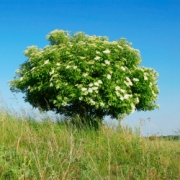Elves
The Gods and Goddesses of Odinism
Copyright © 1996 The Circle of Ostara
Published with the kind permission of the Circle of Ostara.
This article must not be republished or reprinted in whole or
in part without their express written permission.
Our people have always had a close interest in elves and it is true that these spiritual beings are reported to have had frequent contact with humans. This reported contact is not confined to ancient myth and folk lore but has continued up until the present day, a recent example being the meeting of Roc Abercrombie with elves not only in the rural setting of the Fairy Glen, near Cromarty in the Scottish Highlands, but in a park in Edinburgh (see The Magic of Findhorn). We have found that it is perfectly possible to seek out and communicate with such beings and have made several contacts ourselves.
It is a strange fact, however, that despite fairly frequent occasions when humans and “elves” meet, few can give a definitive description of them. They seem to “materialise” in this World of Form, to speak and move in a perfectly natural way, and yet their appearance seems to depend on the expectations of those who see them. Thus they appeared to Victorian children (and were photographed!) as tiny winged beings, like those in the children’s story books popular at the time. Mr. Abercrombie sees them as fauns or Robin Hood figures, complete with bows and arrows. They may appear as little green men in flying saucers. We have seen woodland spirits as strange pyramid-shaped entities, oddly reminiscent of certain characters in the works of Lovecraft.
In folk-lore the treatment given to them has been strangely ambivalent. We seem to both love and fear them. Many are the tales of human beings enticed into “fairy mounds”, there to be well entertained but on emerging to discover that many years have passed. In Victorian whimsy they are delicate sprites, flitting around and tending the flowers, so small that they could not be seen. We see the wicked fairy who curses a child or a bride and the good fairy who brings the curse to naught. Most of these fairy tale themes reach far back into pagan times and the fact that they are still popular today, despite our avowed hard-headed materialism, shows that they have a root-system deep within the collective unconscious.
In Odinic mythology elves are given an honourable place and were venerated almost on an equal footing with the gods. Indeed, some of the gods were themselves seen to be elves. Frey is the “Lord of the Elves” and the ruler of Alfheim. The great craftsman Wayland Smith is an elven lord. In the Elder Edda we hear the gods and elves coupled: “How fare the gods?” and “How fare the elves?” as if the gods and the elves were close kindred.
How then do the elves fit into our modern concept of the multiverse? In that great fantasy, which is really a true example of modern myth, The Lord of the Rings, by J.R.R.Tolkien, elves are given an extremely important role. They are seen as immortals, as beings of magical power, as beings who strangely seem to exist at once in the World of Form and the Worlds of Spirit. In the book Tolkien wrote truly. We feel that this latter characteristic places the elves in the continuum between beings of Midgarth and those of Asgarth. The elves are close kindred with the gods. Indeed powerful elves such as Frey and the other Vanir are ranked as gods themselves. However, elves are also close kindred to the beings who live in Midgarth. They have the ability to live in both worlds at once and are close enough to us that we can see them and speak to them here in the World of Form.
What are elves? We have seen that the evolution of life is a creative process and that spiritual entities are the moving force behind it. The great spiritual forces who we see as the creators of new life forms we look upon as gods, the innovatory powers. Life forms once created need to be cared for, the need of the unfolding pattern needs to be maintained. The fertility of life, the balance of nature, are also the result of spiritual forces. It is these activities which we see as being the province of those beings we have called elves and fairies. The Victorians were right in their whimsy: elves do flit about tending the flowers!
Elves are close to us. Thoughout the centuries we have seen them as friendly guardians of our homes, as the spirits who live beside our burning hearth fires, who dwell in our sacred springs. We have seen them as mischievous imps who bring disease and drive cattle astray, but mostly as strangely friendly towards us. In pagan times, Blots were made to the household spirits, who were regarded as bringing good fortune and protection.
We have recognised these beings in many forms: as the undines, nixies and neckans who live where water flows, as valkyries who ride the wind with Odin, as brown forest elves peeking through branches in the undergrowth. Their world and our world mingle. The elves are true spirits of nature, of unpolluted wilderness, and equally of the unpolluted true nature of man.


